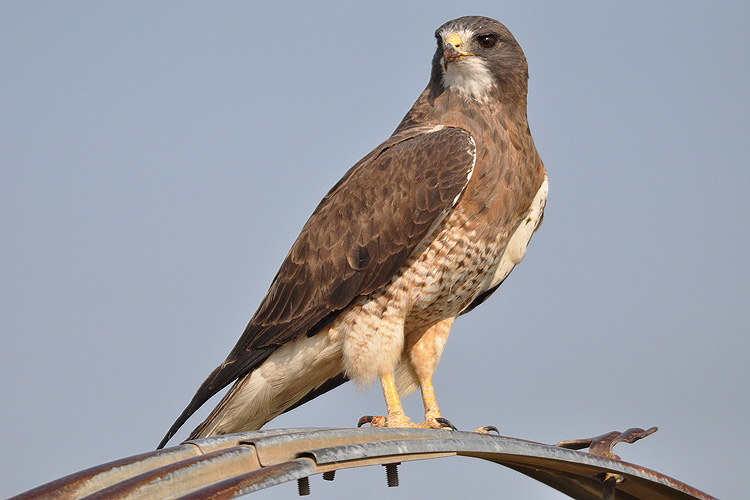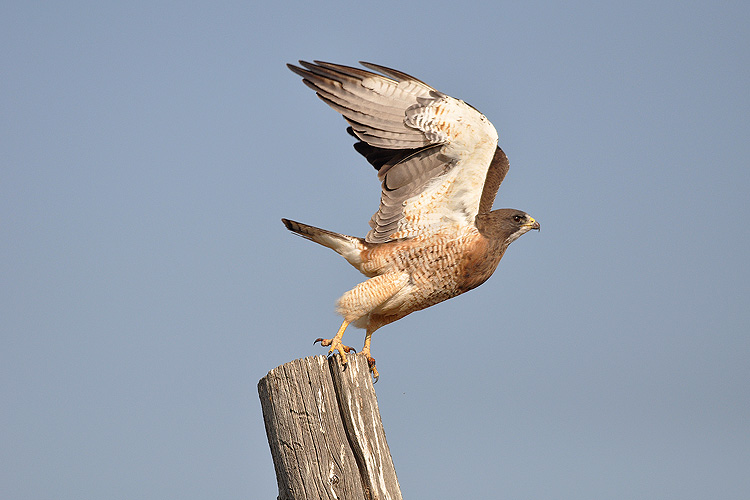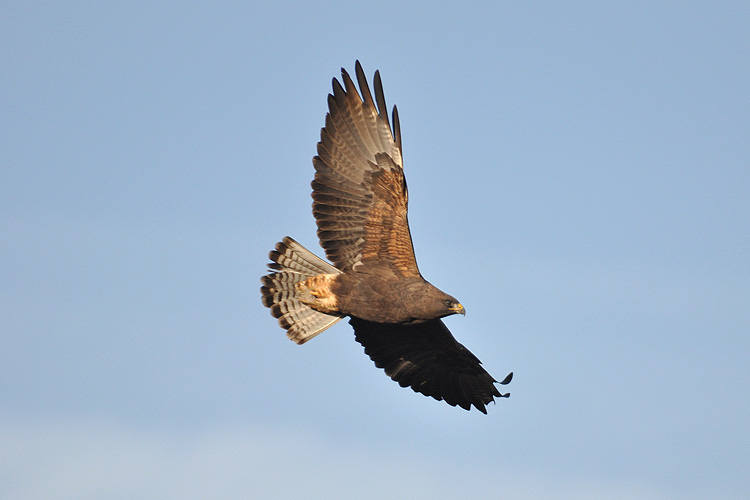Current Distribution Rangewide
Distribution occurs from western North America throughout the Great Plains of the U.S., into Central America, migrating as far south as Argentina [1].
Known Populations in San Diego County
A rare migrant of San Diego County. Sightings have occurred in Borrego Valley, Lakeside, Warner Springs, and El Centro [1].
List Status
CESA- Threatened [2].
Habitat Affinities
Generally found in plains, dry grasslands, and open woodlands [3]. Forages in open grasslands, small open woodlands, and sparse shrublands [3].Nesting occurs in shrublands, grasslands, riparian areas, and agricultural landscapes [4].
Taxonomy and Genetics
There are no recognized subspecies [5].
Seasonal Activity
Migration is diurnal [4]. Nearly the entire population migrates between breeding grounds in western North America to wintering grounds in the lowlands of Argentina. Overall migration can take up to 2 months (20,000km) [4]. Flocks will begin to disperse from Argentina in late February to mid-March and migrate back late August into September [6].
Life History/Reproduction
Arrival to breeding grounds begin around March or April [7]. Nest will be constructed 7-15 days after arrival and takes one or two weeks to complete [7]. Nests are typically built in trees, shrubs, or a small group of trees along a stream [8]. Young are altricial and inactive for the first 8-10 days, but able to stand at about 13-17 days. Young can feed themselves at about 23-26 days, but the female may still feed them for up to 32 days. Juveniles first attempt to fly at 29-33 days and fly at around 38-46 days [7].
Diet and Foraging
Young are fed rodents, rabbits, and reptiles [9]. However, when not breeding, adults feed almost exclusively on insects, primarily grasshoppers [9].
Threats
Pesticides are a large cause of mortality for Swainson's Hawks. Illegal shooting is also a threat to Swainson's Hawk populations [10].
Literature Sources
[0]
[1] Unitt, P. 1984b. The birds of San Diego County. San Diego Society of Natural History Museum no. 13:1-276.
[2] California Department of Fish and Wildlife, Natural Diversity Database. July 2017. Special Animals List. Periodic publication. 51 pp.
[3] Bechard, M. J. 1982. Effect of vegetative cover on foraging site selection by Swainson's Hawk. Condor no. 84:153-159
[4] Woodbridge, B. 1991. Habitat selection by nesting Swainson's Hawks: a hierarchical approach. Master's Thesis, Oregon State Univ., Corvallis.
[5] Retrieved [October, 24, 2017 ], from the Integrated Taxonomic Information System (ITIS) (http://www.itis.gov).
[6] Smith, N. G. 1980c. "Hawk and vulture migrations in the neotropics." In Migrant birds in the neotropics: ecology, behavior, distribution, and conservation., edited by A. Keast and E. S. Morton, 51-65. Washington, D.C: Smithsonian Inst. Press.
[7] Fitzner, R. E. 1978. Behavioral ecology of the Swainson's Hawk (Buteo swainsoni) in southeastern Washington. Phd Thesis, Washington State Univ., Pullman.
[8] McConnell, S., T. J. O'Connell and D. M. Leslie. 2008. Land cover associations of nesting territories and three sympatric budeos in shortgrass prairie. Wilson Journal of Ornithology no. 120 (4):708-716.
[9] Bechard, M.J., C.S. Houston, J.H. Sarasola, and A.S. England. 2010. Swainson’s Hawk (Buteo swainsoni). In The Birds of North America Online, No. 265 (A. Poole, Ed.). Cornell Lab of Ornithology, Ithaca, New York.
[10] Wheeler, B.K., C.M. White and J.M. Economidy. 2003. Raptors of Western North America: The Wheeler Guide.


